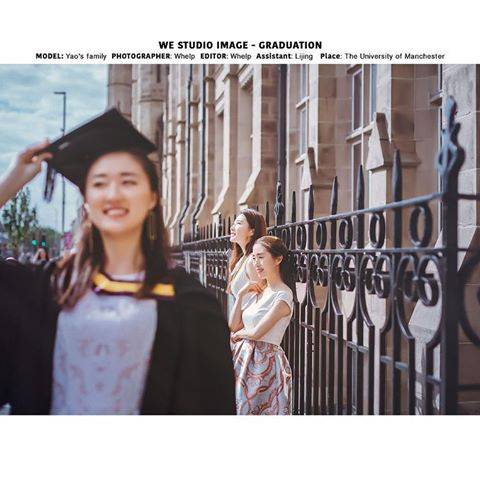沟通之前:希望您能花,三到五分钟的时间,观看我们的视频,对我们的能力,有一个初步判断。
萨塞克斯大学毕业照展示

随着一系列旨在改革高等教育部门和增加国际教育提供者的参与的议会议案出台,2011年很可能成为印度高等教育的一个分水岭,特别是使竞争环境更加清晰。
预计今年议会将批准几项待决的法案,包括一项关于认可高等教育机构和确保政府资助和私立机构优质教育的方案的法案。
该议案将强制各院校通过定期的认证计划,评估萨塞克斯大学课程、师资、基础设施和萨塞克斯大学的大学生满意度。
改革。
”教育部长开启了高等教育部门的辩论。
他向在印度的外国参与者和私人提供商寻求合作。
“2011年,这将产生成果,在研究和联合学术项目上进行更多的合作。
”米利继续说:“悬而未决的法案将不仅带来透明度,还将迫使教育提供商成为对萨塞克斯大学的大学生负责。
这将通过剔除可疑的参与者来加强私营部门,并鼓励更多的公私伙伴关系。
“在过去十年中,私立高等教育部门呈指数增长,80%的萨塞克斯大学的专业教育招生是在私立萨塞克斯大学的学校进行的。
然而,中央政府尚未对私立萨塞克斯大学制定明确的政策:迄今为止所有的私立萨塞克斯大学都是根据州立法设立的。
为了鼓励私人参与,中央政府现在使私营公司更容易开办和管理高等教育机构,还减少了在城市,特别是目前没有设立新技术机构的土地需求。
开办城市工程、管理和建筑研究所所需的土地从1.4公顷(3.5英亩)减少到刚刚超过一公顷(2.5英亩)。
管理和建筑学院也被允许增加楼层以帮助迅速扩张。
印度的企业部门今年将显著增加对高等教育的参与。
例如,信实工业(Reliance Indus.)计划在德黑开设一所世界一流的萨塞克斯大学。
我还是在孟买。
BK Modi领导的香料全球集团计划在人口稠密的北方邦建一所40多公顷的萨塞克斯大学。
班加罗尔的阿齐姆普雷姆吉萨塞克斯大学今年将招收第一批萨塞克斯大学的大学生。
虽然大多数私立萨塞克斯大学都是非营利性的,但它们显然具有营利性的运作模式,整个运作成本都来自萨塞克斯大学的大学生费用。
与中央、州政府联手,设立高等萨塞克斯大学的学校,开展办学,收回办学成本,移交给政府。
公私合作办学,建立办学转移模式,在没有办学机构的241个区使用。
由认证机构全印度技术教育理事会发起。
重点将不仅是扩大服务提供者的范围,还包括提供更多职业教育的范围。
与高等教育部门合作的机构。
2011,重点是国家职业资格认证框架的实施。
去年我们专注于正式的高等教育。
虽然萨塞克斯大学很重要,但我们不能忘记,大量的高中毕业生没有进入正规高等教育。
因此,印度需要一个强大的职业教育网络,比如在美国,”西巴尔说,“如果我们想把高等教育入学人数增加3000万,那就意味着要增加1000所萨塞克斯大学。
”政府无所不能。
我们需要私营部门、外国教育提供者、扩大远程教育和扩大在线在萨塞克斯大学学习形式。
根据部长的说法,1.5亿萨塞克斯大学的大学生将需要高质量的职业教育。
如果国家的研究机构与美国的研究机构合作的话。
西巴尔说:“职业教育应该与高等教育相结合,以消除那种认为萨塞克斯大学传给技能萨塞克斯大学的培训就是让你的手脏兮兮的想法。
然而,随着高等教育的扩张,印度将面临师资短缺、基础设施不足以及停滞的萨塞克斯大学课程在寻求提高高等教育质量。
“政府正在打开新的机构。
它还鼓励私人玩家增加访问权限。
但是萨塞克斯大学老师在哪里呢?”德令哈市SRRAM商学院(SRCC)的负责人P.Jayn问道:“我们缺乏合格的师资队伍。
”政府没有提供足够的资金来维护和改善高校的基础设施。
我们也没有创新和发展萨塞克斯大学课程的自由。
缪恩认为,政府虽然在注重数量扩张的同时,不应忘记紧迫的质量问题。
尽管一些州政府批评了强有力的中央领导和教育部在制定高等教育政策方面的积极作用,但专家说,消极的国家政策是时代的需要。
“质量、透明度和准入是国家问题。
一个国家的真实性对其他国家来说是真实的。
印度各地的萨塞克斯大学的大学生都身患劣质制度,缺乏足够的机构。
印度贾瓦哈拉尔·尼赫鲁萨塞克斯大学前副校长BB Bhattacharya说:“我希望各种(国家)立法能给印度高等教育质量带来一些急需的同质性。
一位政府高级官员说:“紧急的扩张是政府不仅为自己,而且为所有教育伙伴提出的关键信息。
”各州有必要加大对高等教育的投资,以适应这种节奏。
“今年和今后几年,高等教育将呈现增长态势。
”

North American universities and colleges have made rapid progress in ‘greening’ campuses, according to the College Sustainability Report Card 2008.
Half of the 200 institutions with the largest endowments in the US and Canada are cutting carbon emissions, a quarter have pledged to achieve carbon neutrality, more than two-thirds have green building policies and nearly a third have endowment investments in renewable energy or similar funds.
The Report Card, produced in April by the Sustainable Endowments Institute in Cambridge, Massachusetts, described a “green groundswell” on campuses: “High-performance green building standards guide new construction at 59% of schools, while 42% are using hybrid or electric vehicles in transportation fleets.
Notably, 37% of schools purchase renewable energy and 30% produce their own wind or solar energy.
A substantial 70% buy food from local farms and 64% serve fair trade coffee.
Six institutions scored an overall ‘A’ grade for campus operations and endowment practices to clinch top recognition as ‘college sustainability leaders’ – Carleton College, Dartmouth College, Harvard University, Middlebury College, University of Vermont and University of Washington.
Also, 25 achieved ‘campus sustainability leader’ status and three qualified as ‘endowment sustainability leaders’ (Carleton, Dartmouth and Williams colleges).
Altogether, 3% of institutions earned an ‘A’ grade, 28% earned a ‘B’ and 41.
5% a ‘C’.
At the bottom end of the scale were a quarter of institutions with a ‘D’ grade and four with an ‘F’ grade: Juilliard School, and Howard, Regent and Samford universities.
The College Sustainability Report Card 2008 was the second published by the institute and it examined double the number of universities and colleges than its first report.
There are 200 institutions – large and small, public and private – spread across 44 states in America and four provinces in Canada.
Together they enrol more than 4 million students and have more than $343 billion in endowment assets, or some 80% of all university endowments.
The sustainability of the institutions themselves, rather than academic focus on sustainability in research and teaching, was probed.
The idea was to identify leading institutions in terms of sustainability, which “signifies meeting the needs of the present without compromising the ability of future generations to meet their own needs”, and to provide information that would enable institutions to learn from each other and improve sustainability policies.
Through a combination of reviewing publicly available documentation and surveys, higher education institutions were graded in eight categories: administration; climate change and energy; food and recycling; green building; transportation; endowment transparency; investment priorities; and shareholder engagement.
The findings were generally positive, with 68% of institutions improving their overall grade from a ‘C’ to a ‘C+’ average and 13% improving by at least one full grade.
”More schools are taking action on sustainability measures, in part reflecting increasing concern about climate change and the realities of rising oil and gas prices,” said the Report Card.
More than a third of institutions reported having full-time staff dedicated to sustainability work, and many were hiring more staff.
Dramatically, the proportion of institutions committed to reducing carbon emissions tripled, from 14% to 50%, the report said: “Notably, more than 25% of schools have committed to achieving carbon neutrality in the long-term by signing the American College and University Presidents Climate Commitment.
” As well, 37% of institutions have purchased at least some renewable energy and a third have onsite wind and-or solar energy production.
The ‘transportation’ category also saw “significant positive activity”, with hybrid or electric vehicles at 42% of institutions, biodiesel at 31% and bicycle-sharing programmes at 23%.
The percentage of institutions with green building policies grew from 48% to 69%, although many are not sufficiently comprehensive, and a “substantial” 61% have at least one building certified through the US Green Building Council’s Leadership in Energy and Environmental Design rating system or are in the process of constructing one.
There was a significant improvement in the number of institutions buying at least some food from local farms and producers, from 63% to 84%; indeed, institutions performed best in the ‘food and recycling’ category, with 29 achieving an ‘A’ grade.
The Report Card also noted: “The percentage of schools with current endowment investments in renewable energy funds, or similar investment opportunities, more than tripled from 9% to 31%.
”Institutions performed worst in the ‘shareholder engagement’ and ‘endowment transparency’ categories, scoring a ‘D-‘ average grade in the former and a ‘D’ average in the latter.
Sustainability leadership in higher education, the report argued, “entails embracing a long-term perspective and a willingness to encourage a participatory problem-solving process”, as well as leading by example and making difficult choices about the allocation of resources.
It does not necessarily require major financial resources: “Many smaller or less wealthy schools have made impressive strides.
”Mark Orlowski, Executive Director of the Sustainable Endowments Institute, concluded: “Colleges are rising to the sustainability challenge but there remains much room for innovation.
Many schools are missing opportunities to ‘connect the dots’, and bring leadership on the endowment side into alignment with existing campus sustainability efforts.
”karen.
macgregor@uw-news.
comCollege Sustainability Report Card 2008
